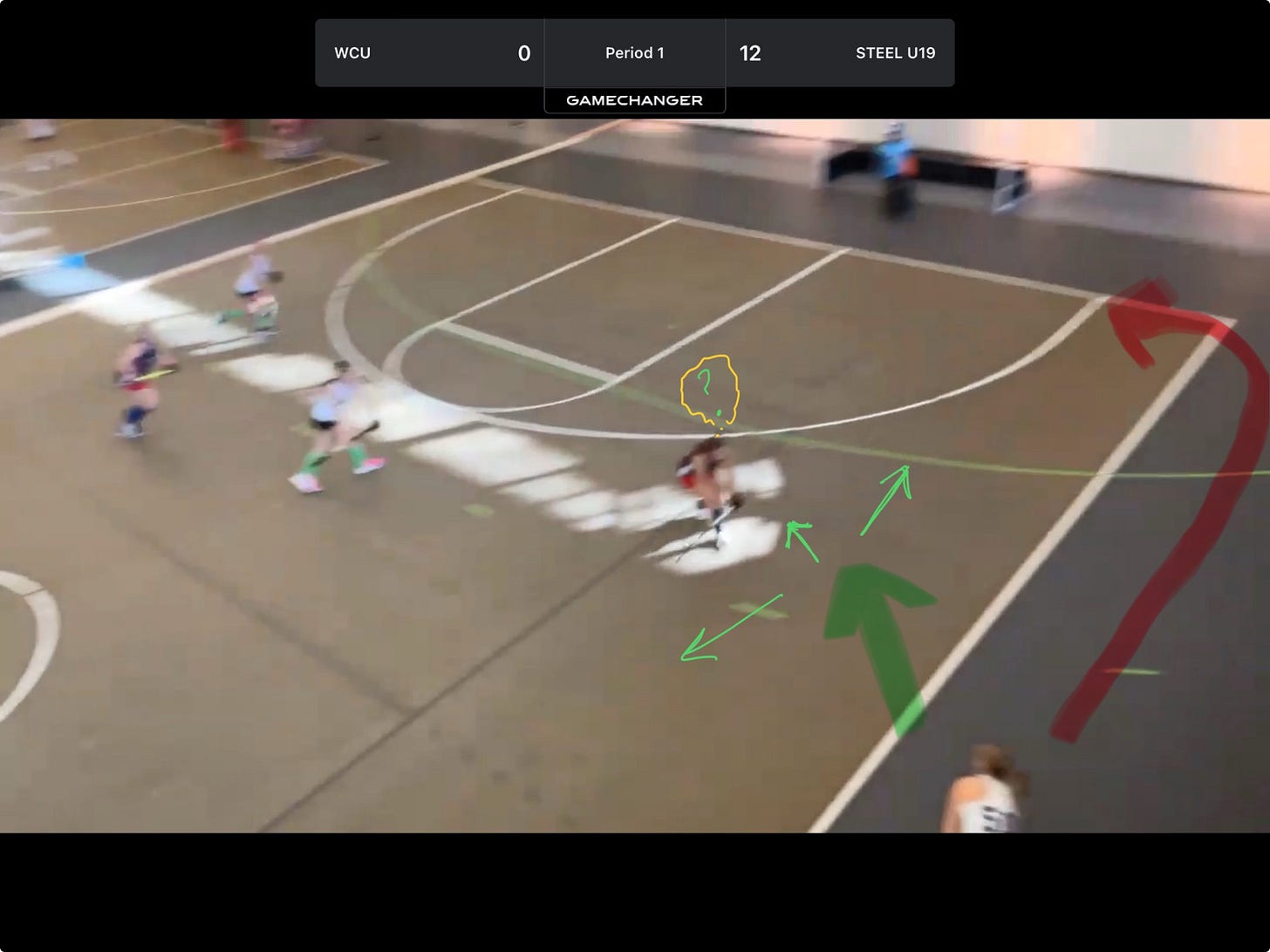Ball carry position has been a major focus for The Collab Field Hockey this winter. You might have heard my arguments for coining the term “Triple Threat” to refer to the best ball carrying position that allows the most vision and options. If not, my previous Substack posts will catch you up, especially “Triple Threat for Field Hockey?” So, when I’m watching games, I have naturally been keen to find “Golden Clips” or great examples of Triple Threat in games.
Most recently, I watched this game live and immediately had to get my hands on the film to clip these examples. The player to watch is #50 in white. Watch it. Enjoy it. And watch it again with a few things to observe:
Body Position-In the screenshot below, her upper body is facing the center of the field and her eyes are up. She is able to pass, eliminate or escape (the three “Threats” to be discussed at later posts suggested to me by A Good Coach) AND she is able to execute these options in almost any direction (back, flat, or through).
First Touch-The image below demonstrates the first touch of one of the above examples. #50’s first touch is one that “Threatens Direct”. The defender must mark the line to goal so that the Route 1 pass is denied.
Ball Carry Position and Route-Additionally, by choosing to carry the ball along the direct route to goal (green path), the defender has less of an idea as to what #50 will do as she has multiple threats available to her. The green route gives her the ability to pass, eliminate or escape the situation in multiple directions. The green route is contrasted by the red route which is the most common path I see when watching games, especially at younger levels. The problem with the red route, AKA the “fishhook”, is that it is predictable and the ball carrier’s options are limited. In indoor especially, as 3D skills are against the rules, a smart defensive unit is able to set up confidently and deny shots and passes across the goal. I am not saying fishhook is bad, it just needs a slight adjustment in order to be more effective against more mature defenders. The green route actually allows for a better fishhook as it causes the defender to hold inside longer and creates more space for a pull right into the fishhook.
I hope you enjoyed watching these examples of Triple Threat on the right side as much as I did. If I’ve convinced you that Triple Threat is THE term for the most ideal situational ball carrying position, I hope you’ll let me know! If you’ve found yourself teaching it intentionally and/or using the term accidentally, I’d love to hear as well. AND finally, I am always up for learning how you term and teach it. So, you’re always welcome to share your differing ideas and view points with me as well. Iron sharpens iron!




